Common Challenges Solved with Laser Skin Resurfacing
Laser skin resurfacing is a versatile treatment that can address many skin concerns. One of the most common issues it tackles is the appearance of fine lines and wrinkles. Our skin naturally loses elasticity and volume as we age, leading to these tell-tale signs of aging. This procedure can significantly reduce these lines, smoothing the skin and giving it a more youthful appearance.
Another common challenge that this treatment can address is uneven skin tone and texture. These irregularities can make our skin look dull and aged, whether caused by acne scars, sun damage, or hyperpigmentation. It works to smooth out these inconsistencies, revealing a more even and radiant complexion.
Furthermore, it is also used to combat the effects of sun damage. Years of sun exposure can lead to age spots, rough texture, and other skin issues. This procedure can help reduce these signs of sun damage, promoting healthier and younger-looking skin.
Lastly, this treatment can offer a solution for those struggling with sagging skin. The procedure stimulates collagen production, which helps to firm and tighten the skin, reducing the appearance of sagging and giving the face a more lifted look.
In conclusion, this is a powerful tool in the fight against common skin challenges. Whether you’re dealing with fine lines and wrinkles, uneven skin tone, sun damage, or sagging skin, this treatment can help rejuvenate your skin and restore its youthful glow.
Discover the ultimate solution to younger-looking skin without a surgical procedure – this treatment can treat wrinkles, acne scars, and sun damage. In this blog post, you will gain insight into how it works so that you have all the necessary information before deciding if it is suitable for your journey toward a glowing, healthy-looking complexion.
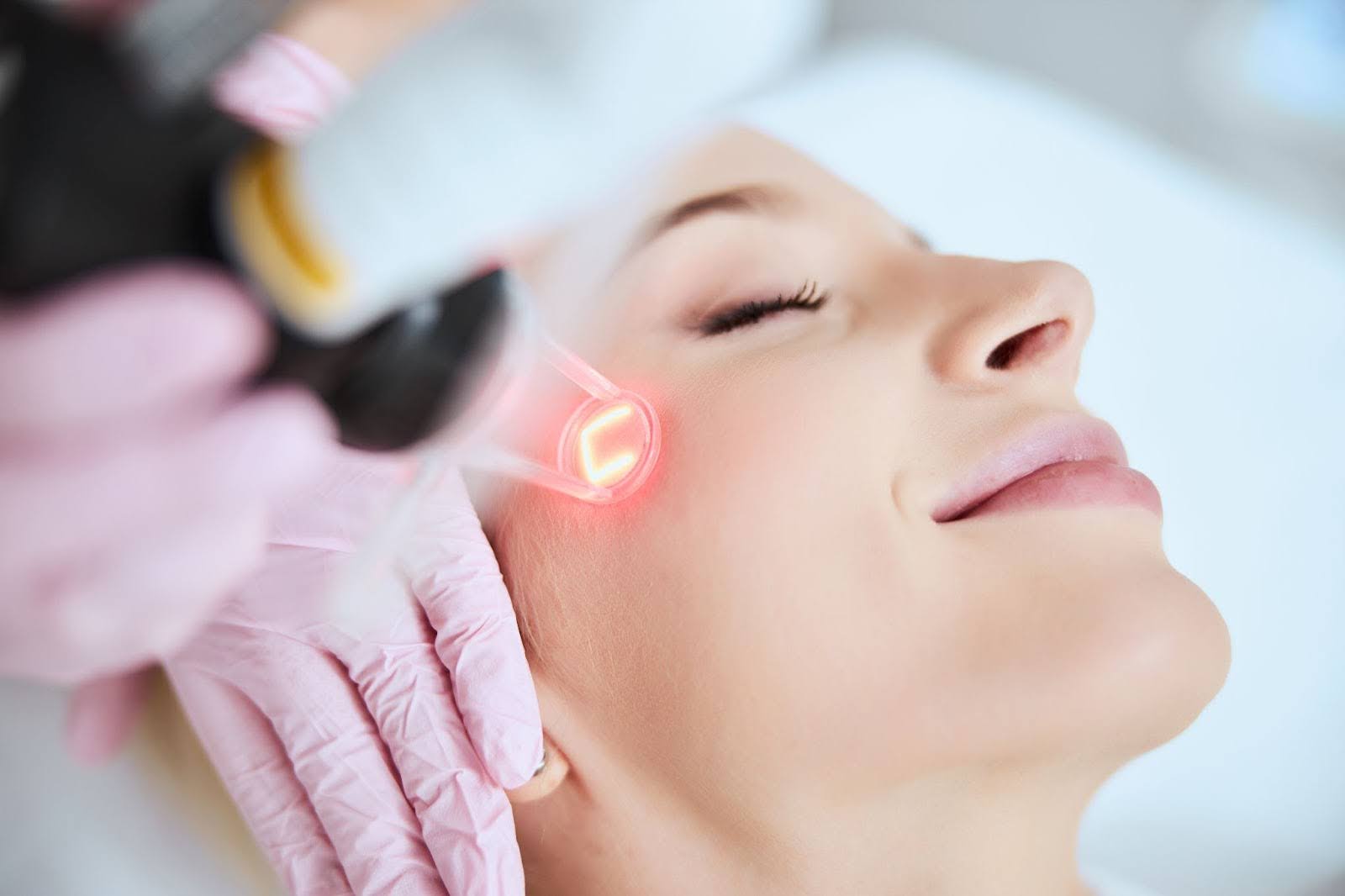
Key Takeaways: Laser Skin Resurfacing
- CO2 Laser Skin Resurfacing is a cutting-edge technique to address various skin issues and promote collagen production.
- Non-ablative treatments are gentler, less invasive options compared to ablative lasers.
- Advanced techniques such as Nordlys, PicoSure®, and IPL offer innovative solutions for various skin concerns. Consult a qualified cosmetic dermatologist, plastic surgeon, or professional before undergoing laser resurfacing treatment.
Unlocking the Basics of CO2 Laser Skin Resurfacing
Laser skin resurfacing is an advanced technique that eliminates the outer damaged layers of the epidermis, the top layer of the skin. It activates collagen production to reveal a smoother-looking, youthful complexion. Those seeking the benefits of laser can use it to treat various issues such as wrinkles, sun damage, signs of aging, uneven pigmentation, and acne scarring.
Are you curious about the exact workings of this procedure? The process of laser skin resurfacing, harnessing the power of light to transform your skin, is fascinating. The laser energy is meticulously applied to remove the topmost layer of your skin, effectively alleviating various skin irregularities. But the magic doesn’t stop there!
As the old skin is removed, the treatment stimulates the growth of new skin cells, leading to substantial development in your skin’s structural support, which correlates to improvement in skin texture that continues months after the laser treatment. This is primarily due to increased collagen production, which helps keep your skin tight yet soft naturally over time.
What sets laser skin resurfacing apart is that it doesn’t rely on a single session or a specific brand for optimal results. Instead, it utilizes a multi-treatment approach, which allows for a more comprehensive and effective treatment plan. This ensures that your skin receives the best care possible, leading to naturally beautiful and long-lasting results.
The Science Behind the Beam: How Laser Skin Resurfacing Works
Laser treatments use laser beams to target specific skin issues in the treatment area, encouraging collagen creation and improving texture. The CO2 laser targets water in the upper dermis layer, raising its temperature and therapeutically damaging it. Two therapeutic techniques are CO2 and erbium lasers for laser resurfacing and fractional devices such as Fraxel that can reduce wrinkles and take care of sun damage or enhance complexion when used appropriately. These procedures may result in improved textures with fewer lines. Plus, there is a decrease in acne scarring and broken vessels/capillaries and tightening capabilities through contracted collagen fibers, all adding to an enhanced overall look!
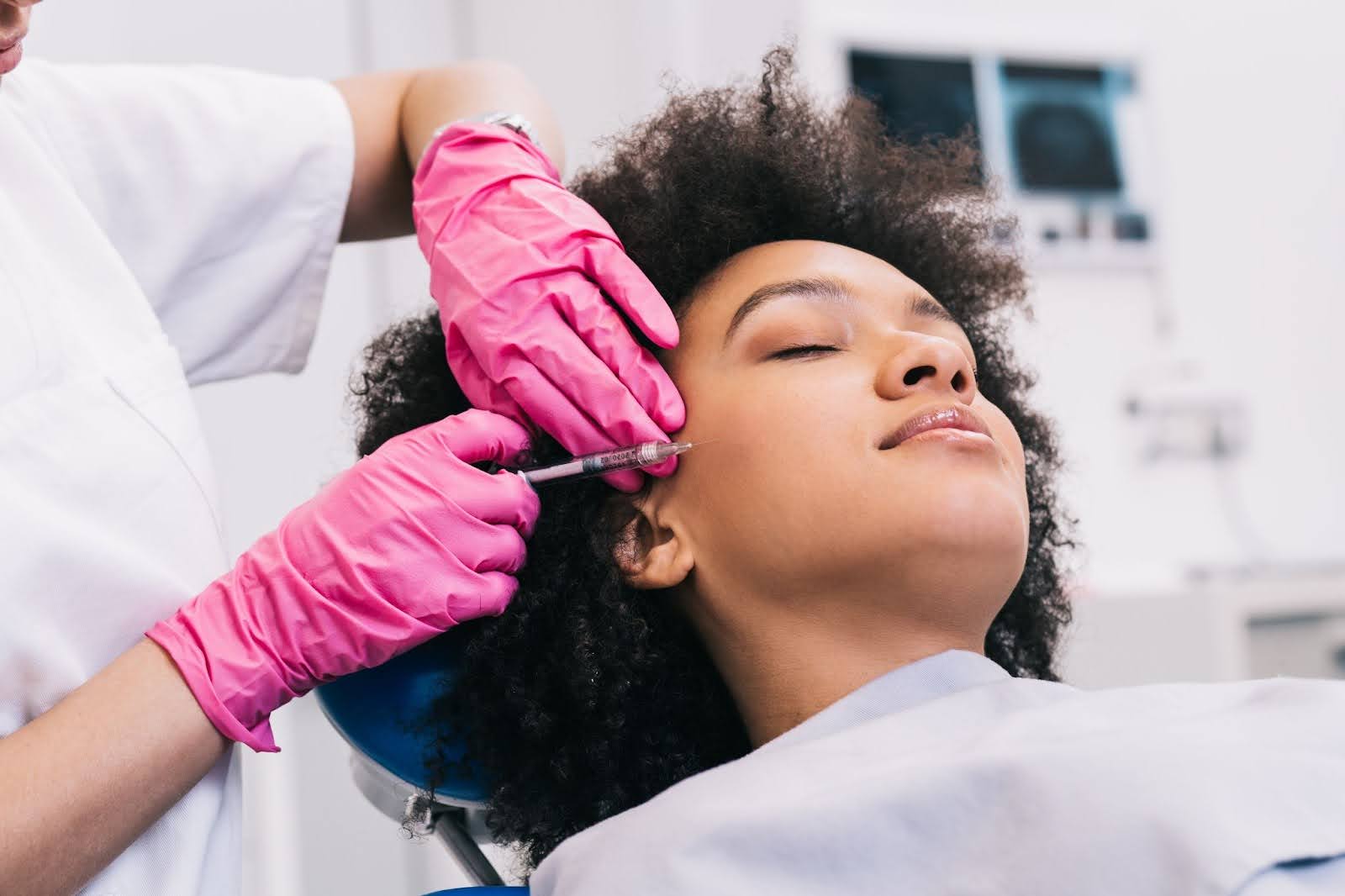
Deciphering Types of Lasers: Ablative vs. Non-Ablative Treatments
Ablative lasers are a form of laser treatment designed to remove the outer layers of skin and allow for healing with new skin. These treatments have been used in mild cases, such as tightening, photodamage repair, treating acne scars, and minimizing hypopigmented or discolored scarring. This contrasts with ablative lasers, which require more time off from activities due to surgery-like side effects and recovery times.
Non-ablative procedures provide quicker results by stimulating collagen production beneath the surface without removing any layer. The range of technology available gives physicians plenty of leeway when it comes to decision-making regarding which type is best suited for their patient’s needs since fractionating these can distribute effect while reducing downtime or possible complications caused by strong ablation techniques altogether.
Is Non-Ablative better?
For those searching for a milder option for improvement of pigment and redness, , the Nordlys system provides an ideal solution with shorter recovery time. This non-ablative approach addresses various skin concerns while still providing comparable results to more aggressive laser treatments. Potential, though rare, side effects are uneven pigment post treatment and blistering.
Erbium Laser Resurfacing
Erbium laser resurfacing is an accurate and minimally invasive procedure for treating various skin types. Benefits include the precise targeting of specific areas, with minimal damage to surrounding tissue, and reduced risk of complications compared to other lasers, including faster healing time. Considered safe for medium-to-darker hues, Er: YAG has been effective against postoperative edema in such tones while exhibiting few side effects relative to its peers. It emits light at 2940 nm wavelength in the infrared range, which some have argued makes it comparably as successful as CO2 lasers.
Fractional Lasers
Fractional lasers employ laser light to improve natural healing and offer long-term effects on different body parts, including facial skin, neck, chest, hands, or arms. This cutting-edge technology uses a series of 3 sessions with 3-4 weeks in between treatments for improvement in deep wrinkles, extensive sun damage changes, acne scars, or other imperfections caused by them while needing minimal recovery time afterward. Skin resurfacing via fractional laser has been proven effective and beneficial due to its lasting outcomes compared with traditional methods used before it came into existence. Downtime usually involves 24-48 hours of redness with the feeling of a sunburn.
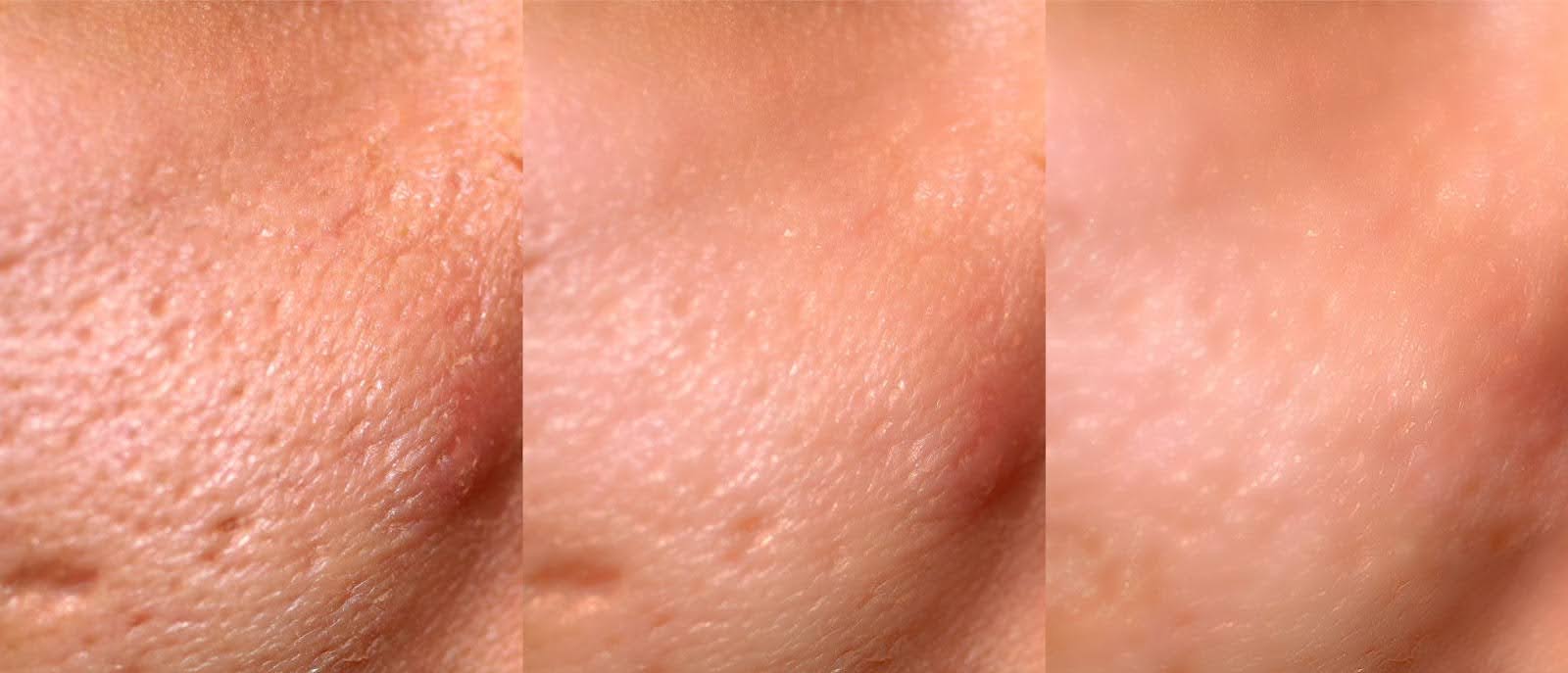
Identifying Ideal Candidates for Laser Skin Resurfacing
Those with fair complexions, mild issues, and realistic expectations are considered suitable candidates for laser resurfacing treatments, often called a “laser peel.” Before starting a laser rejuvenation regimen, an experienced cosmetic dermatologist must discuss all possible dangers or side effects, such as scarring, infection, or hyperpigmentation.
Consulting a certified cosmetic specialist can help identify the most favorable combination of therapies that will offer optimal results to obtain successful outcomes with the least amount of risk when performing this type of skin treatment – Laser Skin Resurfacing or “laser peels.”
Preparing for Your Laser Skin Treatment: Steps and Considerations
Before getting laser resurfacing, it is essential to consult a qualified healthcare provider and provide them with a complete medical background. Patients should follow all instructions given before proceeding with this treatment. It is strongly recommended that smokers quit at least two weeks before and after receiving any laser treatment to experience successful results without risking complications associated with healing.
A pre-treatment consultation should be conducted beforehand so both patient and doctor can discuss objectives, possibilities for outcomes, and potential risks related to this procedure.
What to Expect During and After the Laser Treatment
Laser resurfacing is usually a 2-3 hour procedure that usually utilizes local topical anesthesia, Depending on the desired result, this technique can reduce wrinkles around the eyes, mouth, and forehead or full face
When undergoing this procedure, there will be a delay. Some redness, possible scabbing, and peeling in the treatment area can occur during recovery, typically lasting up to twenty-four hours post-treatment. The total recuperation time depends upon the laser type applied to the skin’s outer layer. Still, for normal-level cases utilizing an ablative CO2 laser, it should take approximately four weeks before complete restoration occurs after any reddening diminishes entirely. Intensive treatments that target the outer layer could require a more extended healing period. Scabbing usually resolves in the first 14 days.
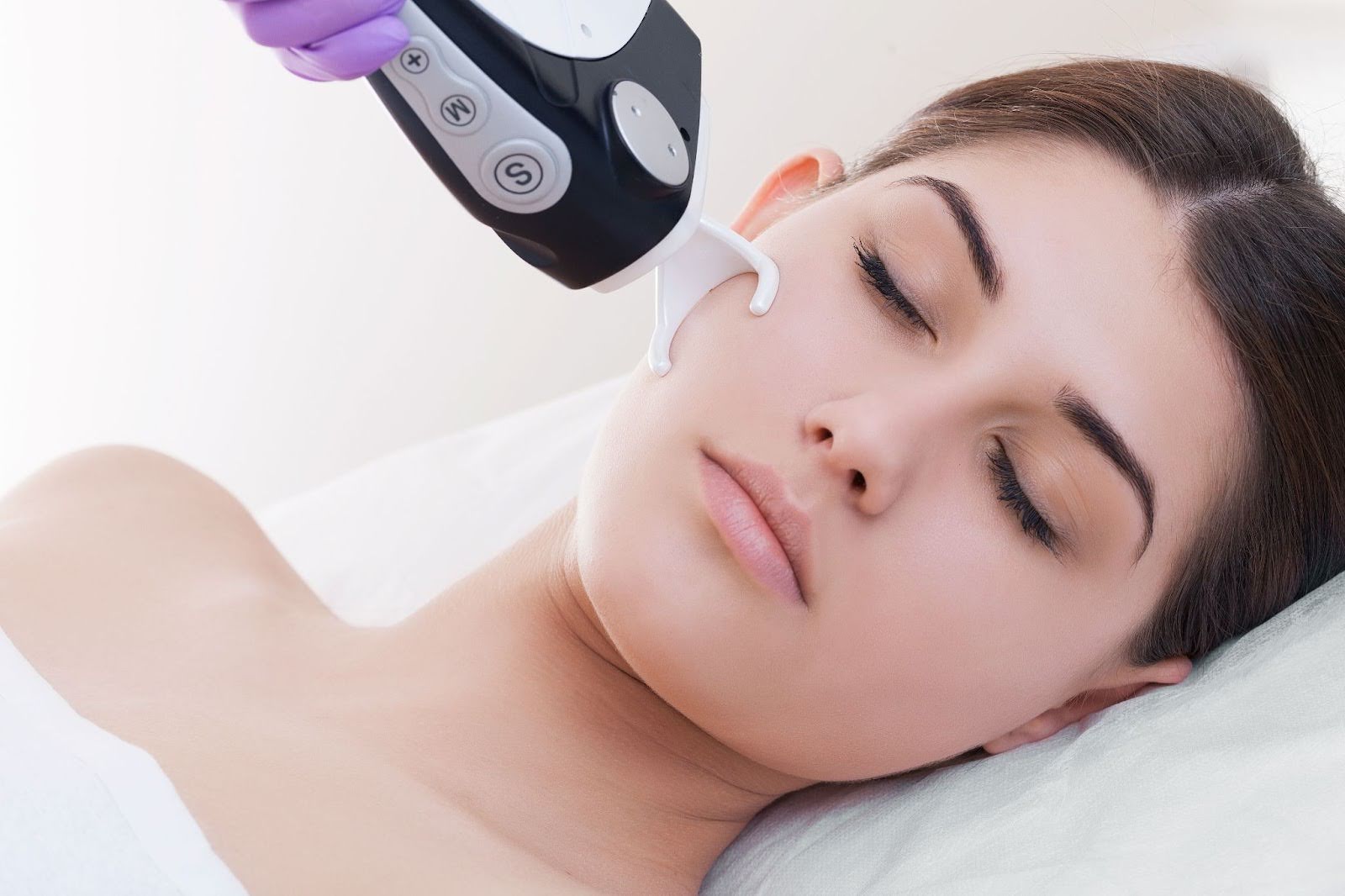
Risks and Side Effects of Laser Skin Resurfacing Treatments
When considering laser skin treatments, it is crucial to be aware of potential side effects such as redness, swelling, itching, and, in rare cases, scarring or infection. The possibility and severity may vary. There are also risks for hyperpigmentation/hypopigmentation.
To avoid issues with the procedure itself – cold compresses or ice packs can help reduce post-treatment inflammation and discoloration – other measures should be taken: protection from sunlight both before and after treatment (due to the risk of burns and pigmentation issues), avoiding any strenuous activity like swimming exercise, etc., for several days following, which might trigger breakouts or increase the risk of getting an infection.
Laser Skin Resurfacing for Darker Skin Tones
For those with darker skin, fractional resurfacing is a great choice. It’s crucial to have this procedure tailored for such skin tones to prevent any risks and get the best results. To ensure that outcome when undergoing treatment, consulting an experienced provider who works on dark complexions will be beneficial.
As another alternative solution, individuals with more pigmented hues might want to check out other types of rejuvenation, like radio-frequency treatments or microneedling sessions. For these cases, the Nd: YAG laser proves very effective and often makes it the go-to option for darker skin tones’ needs, specifically regarding issues related to skin resurfacing matters.
Combining Laser Skin Resurfacing with Other Cosmetic Procedures
Microneedling: An Effective Solution for Skin Rejuvenation
Microneedling is a minimally invasive procedure that uses tiny, sterile needles to prick the skin and stimulate new collagen production. This procedure effectively reduces fine lines and acne scars and improves the skin’s texture, tone, and color. It’s also an excellent choice for those looking to minimize pore size and achieve a more youthful appearance.
The Power of Chemical Peels: Achieving Radiant Skin
Chemical peels are treatments in which a chemical solution is applied to the skin to remove the top layers. The skin that grows back is smoother and younger-looking. Depending on your skin type and desired results, chemical peels can be done at different depths — light, medium, or deep — depending on your skin type. They are effective in treating wrinkles, discoloration, and scars.
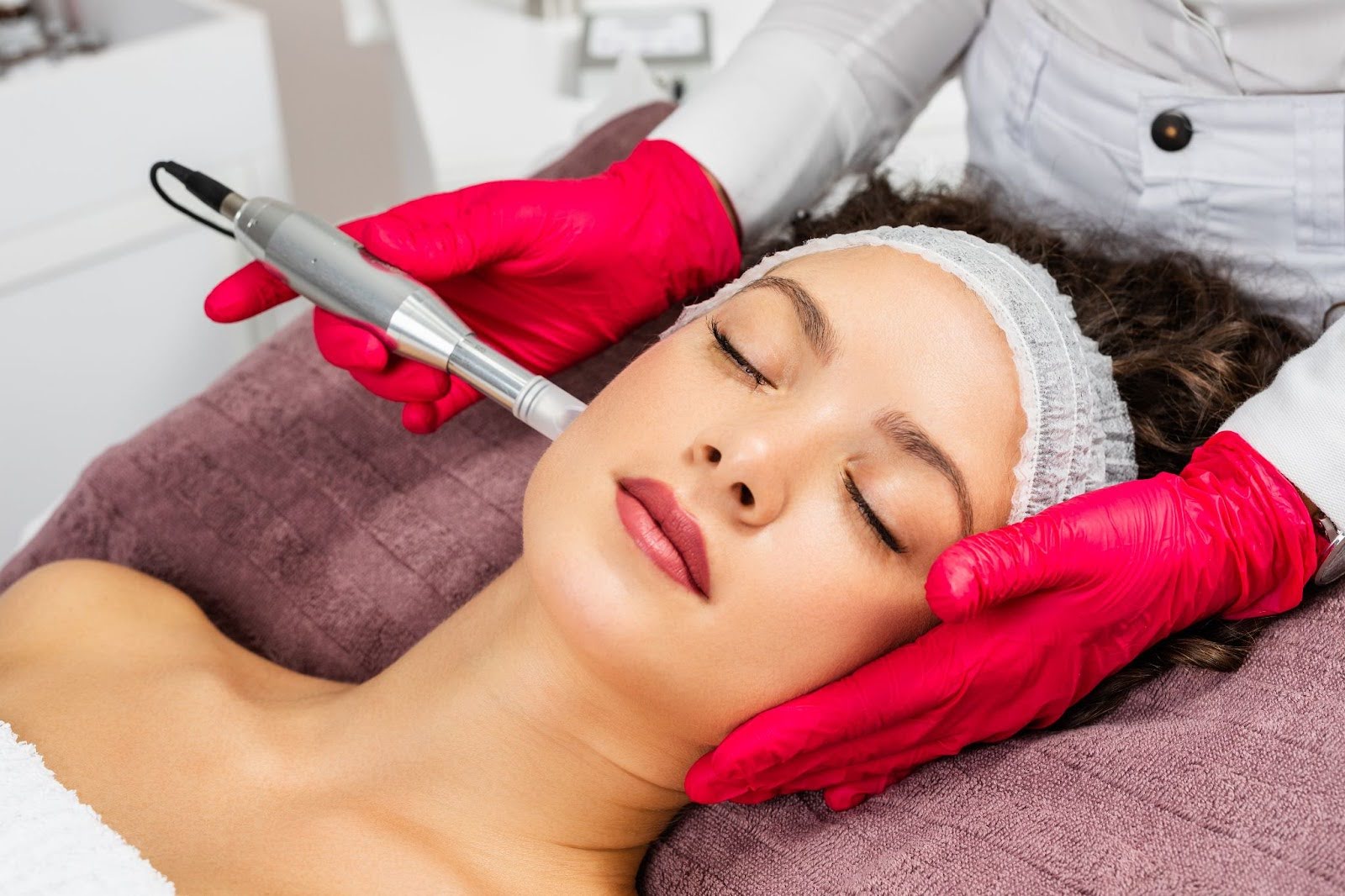
Other Cosmetic Dermatology Services: Expanding Your Options
In addition to the above treatments, numerous other cosmetic dermatology services are available to help you achieve your skincare goals. These may include injectables like Botox and fillers, body contouring procedures, and various skincare products. It’s essential to consult with a dermatologist to determine the best treatment plan for your specific needs and skin type.
Maintaining Your Glow: Post-Resurfacing Skincare and Sun Protection
Patients should keep their skin clean and moisturized, taking into account sun exposure to preserve results from laser skin resurfacing. It is recommended that patients apply sunscreen with SPF 30 or higher daily to protect the skin from ultraviolet rays, which can lead to damage. It may be beneficial during recovery of laser skin treatment on a treated area if they use an ice pack as directed by their doctor. In terms of cleansing the affected region following surgery, 2-5 times daily using either saline or vinegar solutions is strongly encouraged.

Advanced Techniques: Nordlys in Laser Skin Treatment
Advanced laser skin treatments, like Nordlys, are a great way to treat various skin concerns. The benefits of these procedures include
- Improving epidermal pigmentation issues,
- Helping with photoaging,
- Reducing wrinkles (rhytides),
- Correcting scarring due to acne or surgery-related damage, and
- Rejuvenating the overall texture of your complexion.
The Nordlys system has proven effective for all these improvements, making it a popular choice in many circles. Intense pulsed light (IPL) can remove excessive pigment from the surface, resulting in more even tones and stimulating collagen production! This type of cutting-edge skin resurfacing treatment should be considered when discussing how people often want brighter-looking faces, smoother textures, and vibrant luminosity – everything achieved through improved elasticity provided by increased collagen levels from IPL application.
Venice Avenue Dermatology for Expert Laser Skin Resurfacing
For over 20 years, the team of professional experts at Venice Avenue Dermatology has been helping patients achieve beautiful skin with their advanced laser skin resurfacing technology. Dr. Jeffrey R. Hunek and his staff, including laser specialist Shana Lukens, PA-C, have extensive experience delivering quality dermatological services (from Laser Skin Resurfacing to other treatments tailored to individual needs) for safe and effective results every time!
Summary
If you’re looking to reverse the signs of aging or eliminate acne scars and sun damage, laser skin resurfacing is an effective solution. A qualified professional such as Dr. Jeffrey R. Hunek and Shana Lukens, PA-C at Venice Avenue Dermatology, can help determine if this treatment option suits your needs, so don’t hesitate to get a consultation! With proper preparation and care, Impressive results can allow your skin’s youthful glow to shine again.
Frequently Asked Questions
It’s recommended to abstain from tanning, heavy sun exposure, and medications that may cause photosensitivity at least three days before undergoing a laser skin resurfacing. You should also take precautionary measures, such as using broad-spectrum sunscreen daily for four weeks before any procedures on your laser skin.
After a laser skin resurfacing procedure, protecting your newly treated skin from direct sun exposure is crucial. This is an essential part of the healing process. As a rule of thumb, apply sunscreen with an SPF of 30 or higher. This measure is necessary to guard against hyperpigmentation and support the laser skin resurfacing work that has been done. Remember, your skin is more sensitive and susceptible to damage after a procedure, so giving it the protection it needs is essential for optimal results.
Both ablative and non-ablative laser skin resurfacing techniques are highly effective for combating the visible signs of aging, restoring firmness, and achieving a smooth texture for your complexion. The procedure operates by utilizing laser energy to meticulously remove a thin layer of the epidermis in the case of ablative lasers or heating the underlying tissue without damaging the skin surface in the case of non-ablative lasers. Both methods stimulate collagen production, enhancing the skin’s quality and firmness. Ablative and non-ablative laser resurfacing effects are not permanent; they can be noticeable and maintain their impact for up to a year post-treatment.
Recovery times for laser skin resurfacing treatments typically range from up to two weeks for CO2 laser resurfacing to four to six weeks for ablative resurfacing. After the procedure, you can expect to experience redness, swelling, and scabbing in the treatment area, with moderate pain that can be managed with an over-the-counter pain reliever and cold compress.
Laser resurfacing can provide impressive and long-lasting results for facial rejuvenation, though with a longer healing time and costs that tend to be higher than other treatments.
